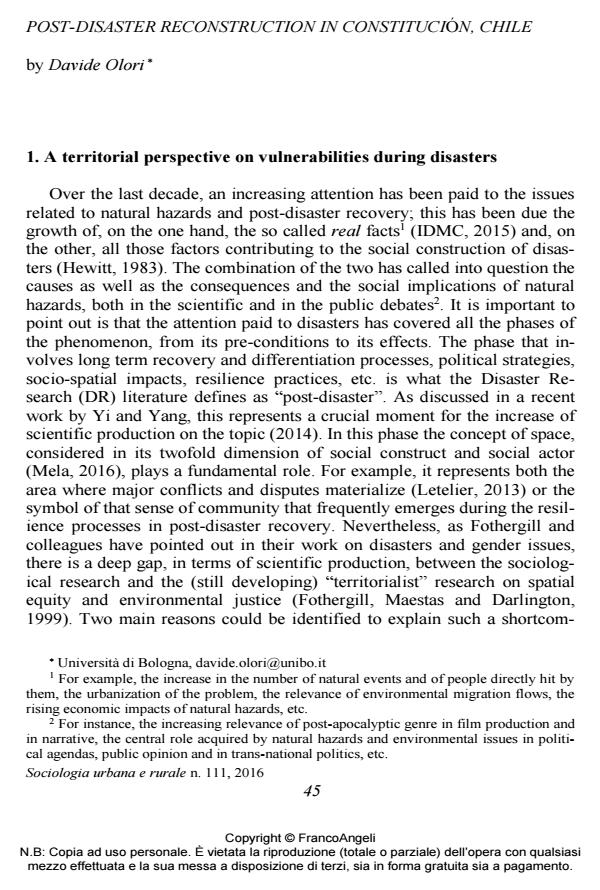Post-disaster reconstruction in Constitución, Chile
Titolo Rivista SOCIOLOGIA URBANA E RURALE
Autori/Curatori Davide Olori
Anno di pubblicazione 2017 Fascicolo 2016/111
Lingua Inglese Numero pagine 19 P. 45-63 Dimensione file 587 KB
DOI 10.3280/SUR2016-111003
Il DOI è il codice a barre della proprietà intellettuale: per saperne di più
clicca qui
Qui sotto puoi vedere in anteprima la prima pagina di questo articolo.
Se questo articolo ti interessa, lo puoi acquistare (e scaricare in formato pdf) seguendo le facili indicazioni per acquistare il download credit. Acquista Download Credits per scaricare questo Articolo in formato PDF

FrancoAngeli è membro della Publishers International Linking Association, Inc (PILA)associazione indipendente e non profit per facilitare (attraverso i servizi tecnologici implementati da CrossRef.org) l’accesso degli studiosi ai contenuti digitali nelle pubblicazioni professionali e scientifiche
The post-disaster reconstruction of territories hit by an environmental disaster further stresses the existing social polarizations and the latent conflicts within the areas where the event takes place. Through a chilean case study, we hypothesize that the investigation of the ways social actors move across the city allows us to understand how people return to "normality" when forced to re-organize their lives in the post-disaster phase.
I processi di ricostruzione post-disastro, e le conseguenze socio-territoriali che generano manifestano nel breve periodo il solco delle polarizzazioni pregresse dei conflitti in campo. Così sulle nuove mappe si materializzano le traiettorie degli individui che affrontano cambiamenti repentini nel breve arco temporale forzato dal disastro. Attraverso uno studio di caso cileno, avanziamo l’ipotesi che esaminando queste dinamiche sia possibile indagare come gli attori sociali si muovono nella città in fase di riorganizzazione, riconoscendo i processi di vulnerabilizzazione che alcune categorie di popolazione sono costrette ad affrontare nel ritorno alla normalità.
Parole chiave:Ricostruzione, vulnerabilità, disastro, Constitución, dinamiche socio-spaziali, disuguaglianze sociali.
Davide Olori, Post-disaster reconstruction in Constitución, Chile in "SOCIOLOGIA URBANA E RURALE" 111/2016, pp 45-63, DOI: 10.3280/SUR2016-111003